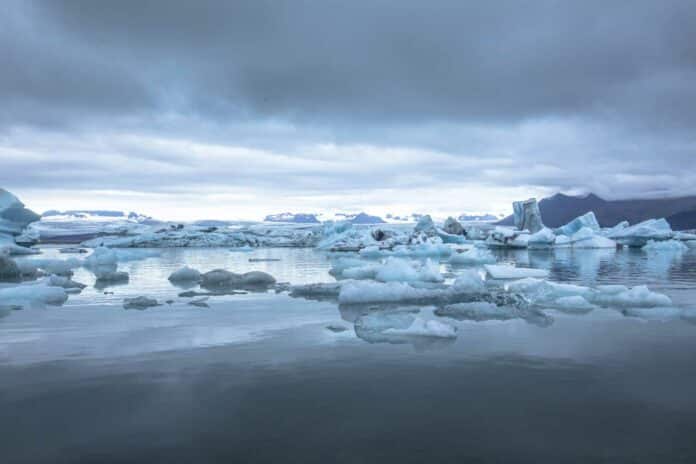The disappearance of Arctic sea ice that has been observed is a sign of human-caused climate change. With further warming, these declines are expected to continue and eventually result in an Arctic devoid of ice.
In a new study, scientists at CU Boulder have synthesized knowledge regarding the timing and regional variability of an ice-free Arctic. According to the survey, the Arctic might be “ice-free” in ten years.
It is anticipated that by the middle of this century, September—when sea ice coverage in the Arctic is at its lowest—will be utterly free of floating ice in the Arctic. Depending on greenhouse gas emissions, the amount of time without ice could increase to several months annually by the end of the century. In the worst-case scenario, when emissions keep on their current pace, the northernmost part of the earth might not have any ice during some winter months.
However, when scientists refer to the Arctic as “ice-free,” they do not imply that there is no ice in the ocean. As an alternative, they describe it as having ice covering less than one million square kilometers, or 386,000 square miles. To put that in context, the area’s minimal amount of ice cover during the 1980s was less than 20%. In contrast, the Arctic Ocean’s sea ice area has historically decreased to about 3.3 million square kilometers in September.
In this study, scientists aimed to assess the body of literature already available on sea ice projections. Additionally, they examined sea ice coverage data from computerized climate models to speculate on future potential daily changes to the Arctic.
They discovered that, on average, the first day when sea ice coverage falls below the 1-square-kilometer mark would happen four years ahead of the monthly averages, but it may happen as early as eighteen years ahead.
According to the team’s projections, under all emission scenarios, the Arctic Ocean might experience its first day without ice in late August or early September during the 2020s and 2030s.
Greenhouse gas emissions mainly cause sea ice loss. The amount of heat from sunlight received by the ocean rises when snow and ice cover decrease, accelerating ice melt and warming in the Arctic.
Sea ice reductions significantly impact Arctic wildlife, such as seals and polar bears, that depend on sea ice for survival. Researchers also worry that non-native fish may migrate into the Arctic Ocean due to ocean warming. It’s still unknown how these invasive species may affect the regional ecosystems.
Sea ice loss also risks the communities living near the coastal region. Sea ice plays a significant role in buffering the impacts of ocean waves on the coastal land. As sea ice retreats, ocean waves would get bigger, causing coastal erosion.
While the ice-free Arctic is inevitable, Jahn said future emissions levels will still determine how often the conditions occur. Under an intermediate emissions scenario, a path the current society is on, the Arctic might become ice-free only during late summer and early fall from August to October. But under the highest emissions scenario, the Arctic could be ice-free for up to nine months by late this century.
Alexandra Jahn, associate professor of atmosSea ice losses significantly affect Arctic animals, such as seals and polar bears, whose existence depends on sea ice quality. Researchers are also concerned about non-native fish migrating into the Arctic Ocean due to ocean warming. The potential impact of these invasive species on the local ecosystems is still unknown.
Communities close to the coast are also at risk from sea ice loss. Sea ice is an essential buffer against the effects of ocean waves on coastal land. Coastal erosion would result from more giant ocean waves brought on by sea ice retreat.
John said, “This would transform the Arctic into a completely different environment, from a white summer Arctic to a blue Arctic. So even if ice-free conditions are unavoidable, we must keep our emissions as low as possible to avoid prolonged ice-free conditions.”
The good news: Arctic sea ice is resilient and can return quickly if the atmosphere cools down.
“Unlike the ice sheet in Greenland, which took thousands of years to build, even if we melt all the Arctic sea ice, if we can figure out how to take CO2 back out of the atmosphere in the future to reverse warming, sea ice will come back within a decade.”
Journal Reference:
- Jahn, A., Holland, M.M. & Kay, J.E. Projections of an ice-free Arctic Ocean. Nat Rev Earth Environ (2024). DOI: 10.1038/s43017-023-00515-9
